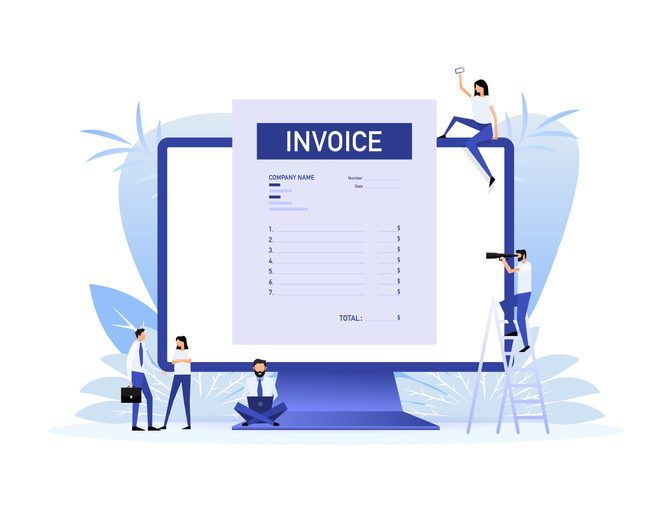Cash flow problems are often cited as the top cause of business failures.
However, the root cause of companies going out of business is not always a lack of profit. What causes many business failures is a lack of adequate cash flow management.
Cash flow management is a term that encompasses many things. Indeed, managing the cash is not limited to checking how much money you have in the bank. Instead, you must actively manage several financial aspects of a business to control cash. You also need to look into the future too.
Cash flow mistakes usually come down to missing one or more of the crucial cash management elements. So, read down the following list to see if you are making one or more of these typical cash flow management mistakes.
1. Failing to Keep a Short-Term Cash Flow Forecast
The first and most common cause is cash flow issues is not keeping a detailed short-term cash flow forecast. Quite simply, if you do not know what you have coming in and what you have going out, it will be impossible to manage what you have left.
Most businesses will benefit from daily updates to a short-term cash flow forecast. The forecast, usually a spreadsheet, will have days as the columns and income and expenditure types as the rows. Updating the forecast daily with actual receipts and payments and revised commitments will allow you to manage the cash on a day-to-day basis.
2. Not Looking Forward
Knowing what you expect to happen next week or month is only one part of good cash flow management. But it would be best if you also predicted your cash flow longer-term, too. A long-term cash flow forecast is needed to plan for seasonal fluctuations and extraordinary expenditure items.
So, it is best to have a forecast that spans at least the next twelve months. The format of such a forecast would be the same as the short-term spreadsheet. The difference is that you would have months as columns instead of days. Keeping a long-term cash flow forecast will allow you to manage long-term commitments better and plan for potential cash flow shortfalls.
3. Confusing Profit with Cash
A common cash flow management mistake is confusing profit with cash. However, what the profit and loss account shows will not reflect the cash position of most businesses.
Profit and loss accounts are prepared according to the accruals concept. So, income and expenditure items are recorded in the books as soon as they are incurred. However, these items will not impact the cash flow until they are paid. So, cash flow forecasts need to take into account the credit terms of suppliers and customers.
Related: Why Your Business Has No Cash But Makes a Profit
4. Paying Creditors Too Soon
Clearing the decks of all unpaid vendor invoices might keep things neat and tidy, and paying bills before they are due might appear to be the right thing to do. However, paying creditors before the due date will put an unnecessary strain on cash flow.
Companies that grant credit do not expect their invoices to be paid early. Indeed, most companies expect payment at least a few days late. And, while a vendor’s invoice remains unpaid, you have more cash in the bank earning or saving you interest. So, it is advisable only to pay creditors when their invoices become due.
5. Failing to Manage Accounts Receivable
If you grant credit to your customers, you need to manage your accounts receivable (AR). If you don’t remind customers when sales invoices become due, some won’t pay you. And some large organizations only pay vendor invoices when they receive a monthly statement or are chased for payment.
To avoid AR balances getting out of control, you need to monitor the accounts regularly and remind people of what they owe. Send out account statements at the end of each month, for example. And follow up with collection calls, letters, or emails if any accounts remain unpaid.
One of the simplest ways to alleviate cash flow problems is to speed up the receipt of cash from accounts receivable.
Related: 8 Rules for Managing Your Accounts Receivable
6. Not Credit-Checking New Customers
When you receive a large order from a new customer, your first inclination will be to celebrate and get that order underway. However, any sales order is useless to you if the customer cannot pay. A customer that doesn’t pay will become a bad debt, which is a common cause of business failures.
So, it is best to credit-check every new customer before you commit to producing or shipping any products to them. And take up trade references if you are dealing with a business-to-business (B2B) sale. If you doubt a customer’s creditworthiness, it is usually best to play it safe and ask for cash up front.
7. Overcommitting to Long-Term Debt
Fixed repayment business loans might seem like a good idea when the business is doing well. Taking out a loan will enable you to invest in growth, purchase new equipment, and give you more cash flow flexibility. However, bank loans must be repaid, regardless of turnover. So, when sales drop, the loan repayment must still be made.
For many businesses, bank loans are not always the best option. And for some companies, they are not an option at all. So, it would be advisable to consider the alternatives. You might be able to build up a cash reserve to fund long-term expansion, for example. Or there are other off-balance-sheet finance options, like invoice factoring, that you might want to consider.
Related: Is Invoice Factoring Right for Your Business?
8. Failing to Monitor Inventory Levels
Holding too much inventory ties up cash. And excess inventory is not easy to turn into cash when the need arises. So, if you don’t monitor inventory levels, you could find yourself overstocked with slow-moving items, and excessive stock levels will cause a shortage of cash.
Stock items need constant monitoring. The best way to assess your inventory levels is to calculate the Days Sales In Inventory Ratio, which indicates how many days it will take to turn over inventory. The Days Sales In Inventory (DSI) ratio formula is Inventory / Cost of Goods Sold X 365.
9. Spending Based on Sales Forecast
Another common cash flow management mistake is treating sales forecasts as actual sales. If you make commitments based on sales forecasts, you could come unstuck if your forecasts prove to be inaccurate.
Sales forecasts almost always include an element of wishful thinking. So, it is best to calculate future cash flow income based on historical figures instead of predictions. Then, you can commit to expenditure based on a most likely scenario rather than the best possible outcome.
10. Not Holding Back a Cash Reserve
Finally, everyone has heard the phrase saving for a rainy day, and most people do put a little money aside each month for the unexpected. However, some people fail to apply this simple, prudent approach to their business finances.
Any cash flow forecast will not be 100% accurate. Sales might not be as high as anticipated, for example. Some customers may pay their invoices late, and you might incur some high unexpected costs. So, putting aside some cash in a reserve account will help you weather these peaks and troughs of cash flow.
Related: Ten Tips to Get Your Invoices Paid Faster
The Bottom Line
The above might appear to be a lot of work. However, if you stay on top of these routine cash flow management tasks, it will probably take you less time than you think. But, more crucially, you will be able to manage your finances better and avoid the cash flow management mistakes that lead to the demise of many businesses.
Your Questions Answered Quickly
Whether your business is thriving and you can’t keep up, or you are waiting on clients to pay, Universal Funding can help your growing company. Call us at 800.405.6035 or complete our rate form today to learn more about invoice factoring and how it can improve your company’s cash flow.
About Universal Funding
Universal Funding is a nationwide invoice factoring solutions leader, supporting growth-focused businesses with scalable factoring solutions. With its invoice factoring, payroll funding, and purchase order financing services, Universal Funding provides clients with the working capital needed to grow and support their businesses without taking on new debt. Ranked as one of the nation’s top invoice factoring companies, Universal Funding provides cash flow financing for businesses all across the United States.




